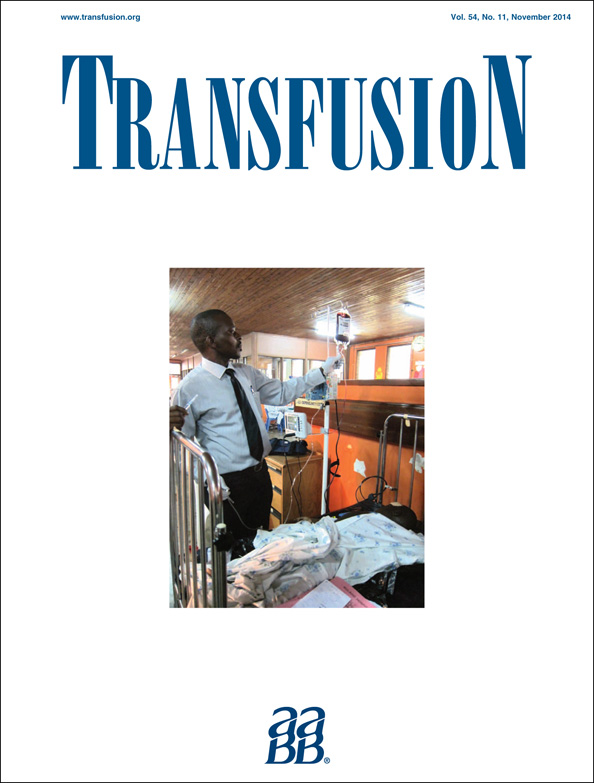Immune hemolytic anemia with drug-induced antibodies to carboplatin and vincristine in a pediatric patient with an optic pathway glioma
Abstract
Background
Drug-induced immune hemolytic anemia (DIIHA) is a rare, but important condition requiring specialized laboratory testing for diagnosis. We report a case of DIIHA with antibodies against carboplatin and vincristine (VCR) in a child with an optic pathway glioma. Platinum-based drugs are established to cause DIIHA; to our knowledge, this is the first report implicating VCR.
Study Design and Methods
A 35-month-old girl with an optic pathway glioma developed hemolytic anemia while receiving carboplatin and VCR. Specialized blood bank testing was performed to determine the presence of drug-dependent antibodies and thus DIIHA.
Results
Initial direct antiglobulin test (DAT) was negative. A repeat DAT 3 days later was positive, 3+ with polyspecific-antiglobulin sera, weak+ with anti-immunoglobulin (Ig)G, and 2+ with anti-C3d. An eluate from the DAT-positive red blood cells (RBCs) was nonreactive. The patient's serum reacted without specificity to all RBC tested using papain-IgG-antiglobulin test (AGT) and polyethylene glycol-IgG-AGT. No alloantibodies to common RBC antigens were detected. When the serum was evaluated for the presence of drug-specific antibody, reactivity was shown with VCR and carboplatin using the drug addition solution method, but only with carboplatin using the drug-coating method.
Conclusion
The patient developed hemolytic anemia during chemotherapy. Initial detection of a panagglutinin suggested a warm-type autoimmune process. However, since DIIHA could not be excluded, chemotherapy was discontinued and further work-up was initiated. The findings confirmed the presence of antibodies to carboplatin and VCR. This case highlights the importance for clinicians to maintain a high index of suspicion for DIIHA in patients with unexplained hemolysis and the importance of specialized serologic testing.




